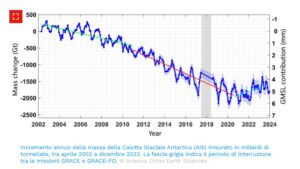
1. Read AI Reviewarrow_right_alt2. Get another free AI Review
AI Review of “Background Independence and Gauge Invariance in General Relativity Part 1—The Classical Theory”
The article presents a deep dive into the variational formulation of classical general relativity (GR), with a focus on the principles of general covariance and manifest covariance, as well as the objectivity principle. The aim is to establish a DeDonder-Weyl-type Hamiltonian formulation for classical GR that meets rigorous geometric and physical criteria. The paper claims significant contributions to the development of Hamiltonian and Lagrangian theories tied to the Einstein-Hilbert variational principle.
Overview
This work investigates the implications of key theoretical principles within classical GR to develop a Hamiltonian formulation that aligns with both the Einstein-Hilbert variational principle and extended Lagrangian variables, such as the Ricci tensor. Using synchronous variational principles, the paper establishes the grounds for constructing fully tensorial representations of GR’s Hamiltonian theory. The work is motivated by the challenge of achieving a non-trivial, manifestly covariant Hamiltonian theory that respects background independence and gauge invariance, aiming to serve as a substantial step toward a theoretical framework that may also hold relevance for future developments in quantum gravity.
Relevant References
Including a clear literature review helps reviewers quickly see what’s new and why it matters, which can speed up the review and improve acceptance chances. The following references were selected because they relate closely to the topics and ideas in your submission. They may provide helpful context, illustrate similar methods, or point to recent developments that can strengthen how your work is positioned within the existing literature.
- Tessarotto, Massimo, and Claudio Cremaschini. “Background Independence and Gauge Invariance in General Relativity Part 1—The Classical Theory.” Symmetry, Multidisciplinary Digital Publishing Institute, 2022, doi:10.3390/sym14102083.
- Tessarotto, Massimo, and Claudio Cremaschini. “The Principle of Covariance and the Hamiltonian Formulation of General Relativity.” Entropy, Multidisciplinary Digital Publishing Institute, 2021, doi:10.3390/e23020215.
- Cremaschini, Claudio, and Massimo Tessarotto. “Manifest Covariant Hamiltonian Theory of General Relativity.” Applied Physics Research, Canadian Center of Science and Education, 2016, doi:10.5539/apr.v8n2p60.
- Cremaschini, Claudio, and Massimo Tessarotto. “Hamiltonian Approach to GR – Part 1: Covariant Theory of Classical Gravity.” The European Physical Journal C, Springer Science+Business Media, 2017, doi:10.1140/epjc/s10052-017-4854-1.
- R, Jha. “Introduction to Hamiltonian Formulation of General Relativity And Homogeneous Cosmologies.” ArXiv (Cornell University), Cornell University, 2022, http://arxiv.org/abs/2204.03537.
- Kiriushcheva, N., and S. V. Kuzmin. “The Hamiltonian Formulation of General Relativity: Myths and Reality.” Open Physics, De Gruyter Open, 2011, doi:10.2478/s11534-010-0072-2.
- Kijowski, Jerzy. “General Relativity Theory and Its Canonical Structure.” Trends in Mathematics, Springer Nature, 2018, doi:10.1007/978-3-319-63594-1_26.
- Hobson, M., et al. “A Variational Approach to General Relativity.” Cambridge University Press EBooks, Cambridge University Press, 2006, doi:10.1017/cbo9780511790904.020.
- Wu, Zhaoyan. “A General Variational Principle of Classical Field and Its Application to General Relativity I.” ArXiv (Cornell University), Cornell University, 2008, https://arxiv.org/pdf/0805.0366.
- R, Jha. “Introduction to Hamiltonian Formulation of General Relativity and Homogeneous Cosmologies.” SciPost Physics Lecture Notes, SciPost.org, 2023, doi:10.21468/scipostphyslectnotes.73.
Strengths
The submission successfully addresses a sophisticated and often underexplored area of classical GR by bringing together concepts such as background independence and gauge invariance into the construction of Hamiltonians. The strategic decision to bifurcate the exploration of GR and quantum gravity (QG) into separate papers offers clear organizational merit, allowing a profound focus on classical theories without the distraction of quantum considerations. The paper’s well-articulated theoretical development and adherence to rigorous mathematical frameworks are commendable, enhancing its potential impact on theoretical physics. It also skillfully tackles the intricate implications of the Einstein-Hilbert variational principle, providing insightful explorations of synchronous variational principles which may pave the way for novel interpretative frameworks in both classical and quantum domains.
Major Comments
Methodology
While the paper adeptly describes the theoretical frameworks and principles, the practical implementation of the synchronous variational principles proposed could benefit from greater elaboration. The derivation provided is mathematically intense but may require additional clarifications for it to be widely applicable or reproducible by researchers less familiar with these specific formulations. An inclusion of worked examples would enrich the paper’s instructional quality and accessibility.
Assumptions
The work assumes a sophisticated audience, which is understandable given the specialized topic, but some foundational assumptions of GR and the associated variational principles are left implicit. Articulating these might afford broader accessibility without sacrificing academic rigor, especially for interdisciplinary readers who may benefit from a clearer exposition of the adopted frameworks.
Framing of Results
Throughout the manuscript, the framing of results occasionally implies more definitive outcomes than the analysis substantiates, especially regarding the application of the proposed Hamiltonian framework to solve broader problems within GR or QG. Though the contributions are significant, a more cautiously optimistic portrayal would strengthen the academic posture of the work by managing expectations about the implications and future applications.
Minor Comments
Presentation and Organization
The organization of the material into discrete sections aligning with core questions regarding GR’s Hamiltonian structure is appreciated. However, several sections are dense with sophisticated mathematical dialogue that could be segmented for improved readability. Including a more robust conclusion that synthesizes the presented ideas and reiterates the paper’s contributions relative to the literature might enhance the reader’s overall understanding and retention of the main concepts.
Terminology
While the paper primarily addresses expert audiences, ensuring that all technical terms and symbols are clearly defined when first introduced would benefit the clarity and flow of the argument. Minor inconsistencies in notation were noted, and addressing these for uniformity would aid seamless comprehension.
Reviewer Commentary
This paper presents a convincing account of the challenges and opportunities inherent in reconciling GR with Hamiltonian formulations under the constraints of stringent covariance and objectivity principles. Future research directed at addressing these themes within quantum contexts could potentially yield substantive advancements in our understanding of gravitational theories. Ethically, the paper responsibly refrains from speculative integration of quantum theories until the classical questions are adequately resolved. However, it opens a fertile field for further investigation, with promising implications for theoretical refinement and potential applications.
Summary Assessment
Overall, this work makes a significant intellectual contribution to the ongoing discourse surrounding classical Hamiltonian formulations in GR, underscoring the relevance of foundational principles like general and manifest covariance. The rigorous examination of these concepts invites deeper conversations regarding the structural underpinnings of gravitational theory, marking an incremental yet meaningful advancement in theoretical physics. Future work following the paper’s exploratory suggestions will undoubtedly contribute to the holistic understanding of gravity within both classical and quantum regimes.
(Optional closing) My engagement with this paper has reinforced my appreciation for the intricate beauty of general relativity’s foundational challenges. The framework presented, while complex, sparks meaningful curiosity for further exploration into the intertwining principles of covariance and objectivity, potentially shaping a new frontier in theoretical physics.


